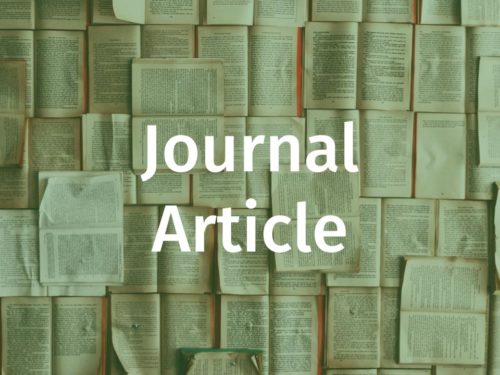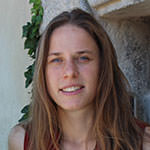For many readers this might be the first time you hear about Western Sahara or Morocco illegally occupying another country, and probably you picture Morocco’s southern border until Mauritania. I have written many angry letters and emails complaining about maps where Western Sahara does not appear, from travelling magazines to books and websites.
This lack of awareness about the existence of Western Sahara is not just ignorance, but on the contrary, the conflict and its long history of suppression are purposefully hidden by the Moroccan regime – with the help of France and Spain. If you are not from Spain – a country whose past is very intertwined with Western Sahara – it is not surprising that information about this conflict barely reached you. But even in Spain, where I am living and despite our involvement in this conflict, many – especially young – people have no clue of what is going on in that corner of Africa, just in front of the holiday paradise of the Canary Islands.
The occupation of Western Sahara (WS) is one of the many ongoing forgotten conflicts, so dragged out in time that it rarely appears in mainstream media, while human rights violations, spoilation of natural resources, and exile have become part of the day-to-day for the Sahrawis. The ignorance surrounding the WS case may be explained by the relatively small population affected, compared to other cases, and the structural nature of the conflict. The Sahrawi fought in open war and in guerrillas against the Moroccan invasion, but since the ceasefire of 1991 their fight has been non-violent.
The Spanish historical debt
By law, Western Sahara was and still is a Spanish colony, the only territory in Africa that did not undergo a decolonization process. Since the ceasefire ended the war with Morocco in 1991, its people have been waiting for a referendum to decide whether WS should be an independent state or part of the Kingdom of Morocco. This unclear situation led to the implementation of an UN-mandated operation: the United Nations Mission for the Referendum in Western Sahara (MINURSO). Interestingly, this mission is the only such mission with no mandate to monitor human rights.
In the late 1960s an independence movement was launched to fight for self-determination in WS, similar to movements in the neighbouring African countries. This activism was followed by violent repression of Franco’s regime, which fiercely opposed losing the last colony of the decadent Spanish colonial power. To elude the UN’s pressure to decolonize the territory, Franco conceded the status of 53rd province of Spain to Western Sahara, thus giving the Sahrawis full citizenship. Shortly after Franco‘s death, significant political instability in combination with the weakness of the Spanish administration preluded the Moroccan intervention in WS. In an exercise of well planned political propaganda, King Hassan II called for the “Green March”. This demonstration of more than 300.000 Moroccans crossing over the border into WS claiming the territory for Hassan II led to the signing of the Madrid Accords, in which Spain illegally transferred Western Sahara to Morocco and Mauritania, while conserving its own economic benefits (Spain would retain 35% of the shares of the FosBucraa company and fishing rights for the next 20 years). Directly after, the regime of Hassan II committed genocide and displaced half of the Sahrawis into refugee camps in Tinduf, Algeria. Mauritania backed down in 1979. But Morocco did not give up its claims over the territory and remained engaged in open war against the Polisario (the Sahrawi rebel national liberation movement) until 1991, when the parties agreed to a ceasefire on the condition of a referendum on self-determination which never took place. The Moroccan Government took advantage of the peace to finish a wall they started to build in 1980 to keep control of most of the WS area, especially those regions with rich natural resources such as fertile fishing grounds and huge amounts of phosphorus as well supposed offshore oil fields. The wall is more than 2700 km long, surrounded by landmines. It is inspired by the Bar Lev Line of the Sinai and Israeli experts helped in its construction. This wall divides the territory into sectors, each controlled by 100,000 soldiers.
At least in Spain, this conflict should be the centre of political debates and foreign policy, yet on the contrary, it barely appears in the media and a global amnesia seems to have hit politicians and the international community.
The spoliation of natural resources
Since the occupation of WS and after the ethnic cleansing of its territory, the government of Morocco focused on the exploitation of the rich natural resources in the region: fisheries, phosphor, and since the 1980s intensive agriculture.
Phosphorus
The Bucraa mine is one of the biggest phosphorus reserves in the world. This element is essential for conventional agriculture and, thus, key for food security in countries dependent on industrial agriculture. In short, it is a finite strategic resource. There are no substitutes for phosphorus and it cannot be artificially synthesised. It is easy to predict that its price will keep rising. With the annexation of WS, Morocco became the leading exporter of phosphor to the world and the third largest producer worldwide. A too profitable and secure business to let go of, it generates an income of around 250 million USD a year.
Colonial Agriculture
In 1989, after dispossessing the indigenous population, King Hassan II launched a pilot farming project in the surroundings of the city of Dakhla. In 2008 there were already around 600 hectares dedicated to the production of vegetables in greenhouses, mainly tomatoes, cucumber, and melon, to be extended to 2000 hectares by 2020. This production is entirely for exports. It does not feed the local population. The water requirements for this kind of production are very high. Farms are completely irrigated with groundwater, being extracted at an unsustainable rate. The overexploitation of the water resources will lead to depletion of the pits and the salinisation of the water basin. In a region with no superficial water resources, this would ruin the access to clean water and consequently make permanent human life impossible.
The Sahrawis are not even benefiting from this industry as employees, as the labour force is entirely formed by Moroccan settlers. The strategy of the Moroccan government consists of promoting migration of Moroccans to the WS to enhance colonization and ensure a Moroccan majority. Hereby these industries are key to help settle more Moroccans and to achieve the objective of complete annexation of the occupied territories. The strategy is as old as colonialism itself, and in the WS case, if there will finally be a referendum for self-determination, the King has already claimed the right to vote for the settler population, ensuring a pro-Moroccan result and further legitimization of his aspirations for a “Great Morocco” including the WS area.
The outlook is bleak: the area dedicated to agriculture will keep growing. The Moroccan Government’s aim is to sell the produced vegetables on European markets. The products labelled as “Moroccan” would benefit from the EU-Morocco Free Trade Agreement and reach the European consumers, who would have no way of knowing that the product comes from an occupied territory, where human rights are constantly being violated.
All farms in the occupied WS are owned either directly by King Mohammed VI, Moroccan holdings, or French enterprises. Les Domaines Agricoles, a subsidiary of the holding SIGER owned by the King is the largest Moroccan agribusiness. Among other businesses it also profits from the occupation by producing vegetables in almost one hundred hectares of greenhouses irrigated with groundwater near the city of Dakhla in WS. The website makes it very clear that the company considers WS as part of Morocco: “Les Domaines Agricoles rely on several sites of agrarian and agro-industrial production divided on the Moroccan territory, from Dakhla to Berkane”. Also the alleged philosophy of aiming to “contribute to the development of the country world respecting environment while favouring human development” does not match with the overuse of scarce natural resources like water and promotion of occupation.
Mohammed VI is one of the wealthiest kings. He has the unconditional support of France and the US, and is considered a strategic ally for European countries like Spain. No Spanish government of the democratic period has pushed even a bit for the Sahrawi struggle. The control of illegal immigration and the economic agreements allowing the exploitation of natural resources seem to weight more than the rights of 400.000 people that not even 40 years ago were Spanish citizens.
For further reading:
United Nations Mission for the Referendum in Western Sahara










